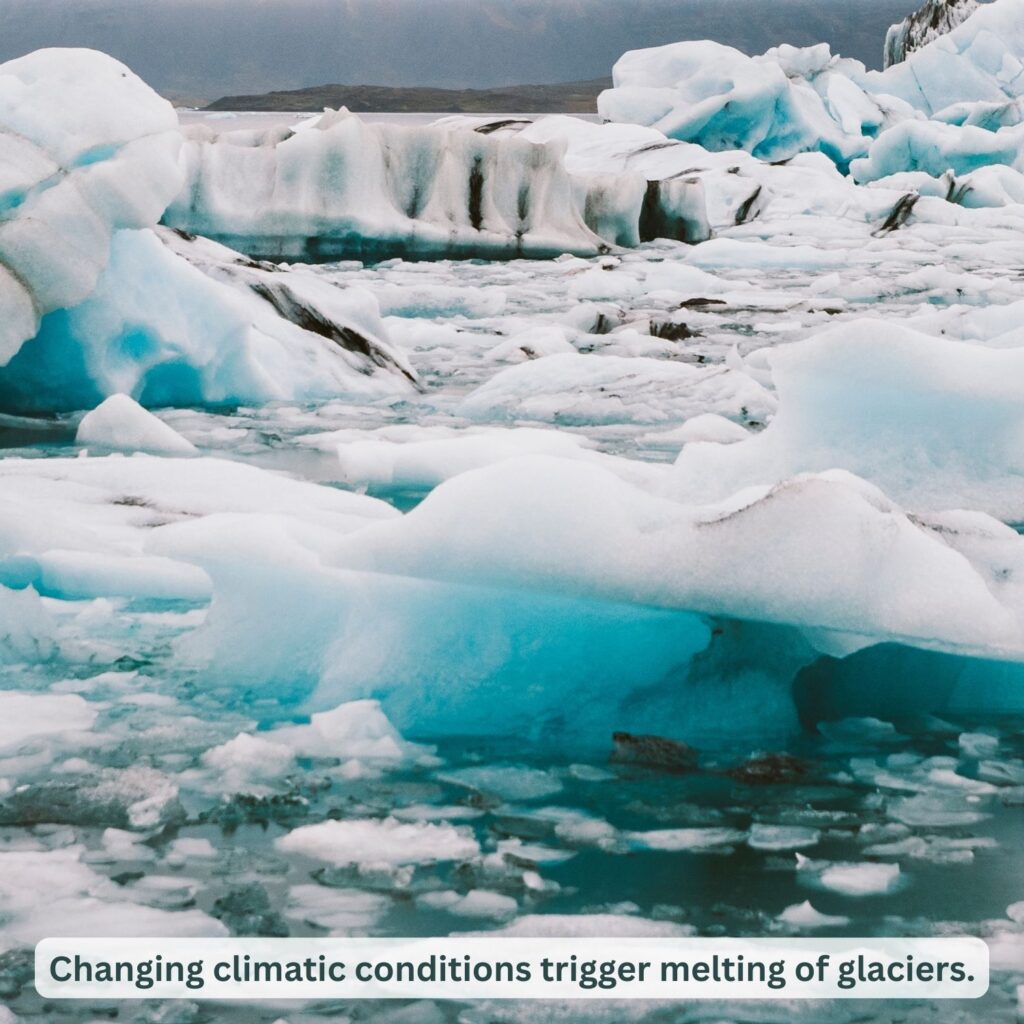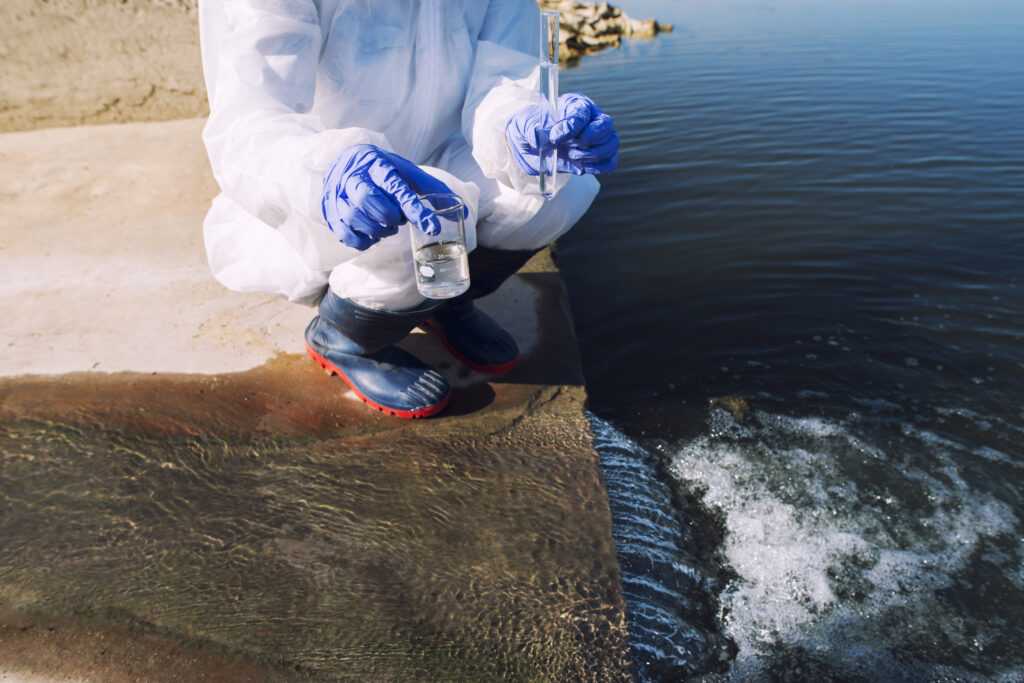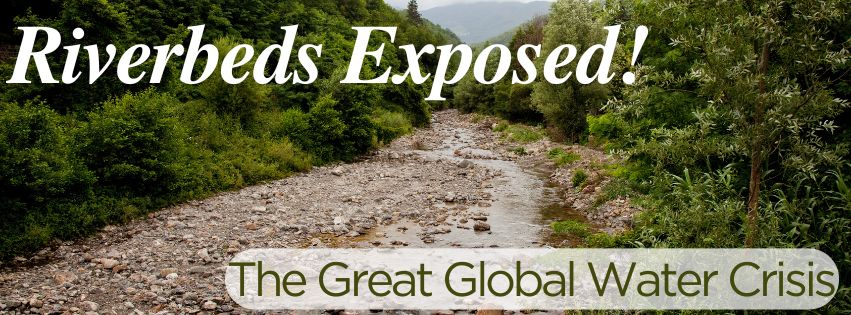Earth’s 71% surface is capped by water which is primarily covered by oceans that is salt water. While freshwater reserves are only about 3% that too majorly locked in the form of glaciers. Thus available freshwater has limited stock, our changing climatic conditions are responsible drying rivers.
Firstly, lets understand how the changing world is responsible for drying rivers.
Drying Rivers and the Thirst of a Changing World
When we talk about rivers they are the lifeblood of our planet. For centuries, they have nourished civilizations, supported ecosystems and shaped the landscapes thus making our planet habitable. But in recent years, these vital waterways are disappearing at an alarming rate.
Those rivers which were once dominating and flowing abundantly in various parts of world are gradually drying up. This disappearing water is leaving behind bare riverbanks which sharply displaying a emerging crisis.
Some of the world’s major rivers are under the threat of vanishing water leading to water scarcity, exposed riverbeds, threatening regional food production and even affecting shipping activities. For example Colorado River (USA & Mexico), Yangtze River (China), Ganges River (India & Bangladesh), Nile River (Northeast Africa), Rhine River (Europe) and many more are been affected by changing conditions.
When we analyze about this we observe that the reasons behind are alarming, complex and interconnected.
If we see the cause of the degradation of these water bodies its primarily due to climate change. This changing climate conditions are altering rainfall patterns. It is also accelerating the melting of glaciers, reducing the flow of rivers that depend on snowmelt and seasonal rainfall. Human activities further complicate the problem, with excessive extraction, pollution and large-scale damming upsetting the natural balance of these water systems.
In this blog, we’ll plunge into the causes, consequences, and potential solutions to this pressing water crisis rising over the globe.
Why Are Our Rivers and Lakes Disappearing?
The external means causing exhaustion of these water bodies is not due to a single factor but its a cumulative effect of natural and human-induced components thats threatening survival of these waterways. Let’s learn more about these sources –
1. Climate Change –
Climate change disrupts global weather systems leading to altered precipitation patterns causing imbalances in river flow and lake levels.
Global warming accelerates melting of glaciers as well reduces snow accumulation affects many large rivers like Colorado and Ganges.
Higher temperatures rises rate of evaporation leading to reduced lake levels and shallower rivers especially in arid and semi-arid regions.

Climate change has multiple effects want to know more about natural disasters do read –
2. Over-Extraction of Water –
Agricultural demands diverts significant volumes of water from rivers and lakes, leaving them depleted. Rapid urbanization and industrialization raises freshwater demand causing enormous withdrawals especially in densely populated regions. In some cases, excessive pumping of groundwater depletes aquifers connected to rivers and lakes, reducing surface water levels as a secondary effect.
3. Pollution and Habitat Degradation –
Fertilizers and pesticides wash off into rivers and lakes leads to algal blooms degrading water quality and oxygen levels. Such water bodies destroy the flora and fauna in the vicinity leading to complete destruction of habitat.
Untreated discharges from factories contributes to lowers usability of water from lakes and rivers. Such water is harmful for humans causing many dangerous diseases.
Untreated sewage adds to pollution, especially in developing regions where infrastructure for waste management is inadequate.


4. Population Growth and Urban Expansion –
Rising global population increases overall water requirement may be directly or indirectly, drawing huge amount of water from water streams as well as from ground water. Expanding cities needs land for development that leads to intrusion on wetlands and riverbanks which further reduces their ability to retain and replenish water.
Population is a one of the main reason for water scarcity, read more-
https://www.populationmedia.org/the-latest/population-growth-and-water-scarcity
5. Damming and Water Diversions –
Hydropower project a renewable energy source needs large dams this causes obstruction of natural river flow causing upstream flooding and downstream drying, as seen with the Mekong and Nile Rivers.
Rivers are diverted for many reasons like agricultural needs or infrastructure projects for urban or industrial development leaving stretches of rivers dry or with severely reduced flow affecting regions around these banks.
The Domino Effect of Drying Rivers and Lakes
Shrinking rivers and lakes triggers series of events which doesn’t limit its effect over banks but way more than that. These water bodies are vital support pillar of ecosystem which keep running agricultural activities and continued water supply for millions. Fall of such a critical resource affects biodiversity, disrupts economies, and intensifies water scarcity for communities. These impacts are interconnected, with one effect often amplifying another, creating a cycle of environmental and societal challenges. Let go through these rippling effects –
1. Ecosystem Collapse –
Diverse species inhabit in rivers and lakes which include fishes, amphibians, birds as well mammals. Shrinking water bodies destroy habitats, forcing species to migrate, adapt, or face extinction. Wetlands and floodplains, important for biodiversity, are particularly vulnerable to water loss.
Reduced water level directly lowers fish population but initiates of chain of responses disturbs local communities dependent on fishing also affecting predators.
2. Agricultural Challenges –
Agricultural activities are completely based on rivers and lakes for irrigation, lowering water levels threatens crop yields and food security. Staple crops like rice, wheat, and maize which are particularly vulnerable to reduced water availability. Rural communities dependent on agriculture and fishing are often worst affected, resulting in economic instability and forced migration.
3. Water Scarcity for Communities –
Rivers and lakes are source of freshwater for millions. As this water source dwindle, communities turn towards groundwater or high priced desalination technique which are not sustainable in longer run. Reduced water supply also puts hygiene and sanitation at stake leading to rise in water borne diseases.
Water scarcity often leads to disputes over access to limited water resources, whether within nations or between nations, as seen in the case of rivers such as the Nile(Africa) and the Mekong(Asia).
4. Economic Consequences –
Rivers and lakes are used for generating hydropower, lower water level reduce energy production, burdening industries and urban power grids for alternatives.
Iconic water bodies like Lake Chad and the Aral Sea used to be best tourist spot but now its losing appeal affecting local economies.
Water scarcity forces governments and civic bodies to invest in expensive water infrastructure, desalination plants or storage facilities to overcome shortage.
5. Displacement and Migration –
Water scarcity forces people to leave their homes in search of more reliable resources, leading to overcrowding in urban areas and conflict over resources. Climate refugees from regions such as sub-Saharan Africa, where lakes such as Lake Chad are disappearing, highlights this growing crisis.
From Drying Rivers to Living Waters: A Call for Conservation
Our rivers and lakes facing crisis due to climate change, overuse, pollution and mismanagement needs some reviving actions. By transitioning from crisis to conservation, we can create a path toward sustainable management and restoration of these invaluable resources. In-depth understanding of the crisis paves way for strategies for conservation. Some practical solutions are listed below which may turn the page to start new chapter of restoration –
i) Adapting water saving techniques like drip irrigation and recycling systems effectively improvises usage in agriculture and industries.
ii) Enforcing water sharing agreements and policies prevent overuse in industries.
iii) Enforcement of stricter laws against industrial and agricultural pollution will promote pollution control.
iv) Reforestation and restoring wetlands promotes water retention and filtration supports rebuilding habitats.
v) Removing unnecessary dams and restoring natural flow patterns to revive ecosystem.
vi) Investing in infrastructure like reservoirs and rain water harvesting techniques can lower dependency on rivers and lakes.
vii) Efforts to reduce greenhouse gas emissions lowers the impacts of global warming on overall water resource.
viii) Creating awareness and teaching importance of water conservation will lower the water usage on longer run.
ix) Innovative conservation projects supported by governments, business owners and NGO’s will speed up the restoration process.
Bringing Our Rivers and Lakes Back to Life
The exposed riverbeds and diminishing lakes what we see today not just symbolizes the loss but a cry for help. This shrinking water streams reflects the impact of human activity and climate change. We can take this condition as a opportunity to rethink, redesign and reclaim our valuable lifeline for our future generations.
Restoring our rivers and lakes requires a commitment to sustainable practices, innovative technologies, and collaborative governance. It means protecting ecosystems, empowering communities, and ensuring equitable access to water for all. Any effort like water-efficient agricultural practices or rehabilitating polluted waterways or may be working towards global warming crisis is challenging and essential.
The current condition of our rivers and lakes are alarming but well planned actions and its execution can reverse the damage further extending its life and sustainability. The task is daunting but the effort will reward us with healthy environment, pleasing landscapes, resilient communities and a secure future which is worth an every effort.
“United, we can restore our waterways, preserving these vital resources to nurture life and inspire future generations.”
“So, there’s no better time to act than today!”

Leave a Reply